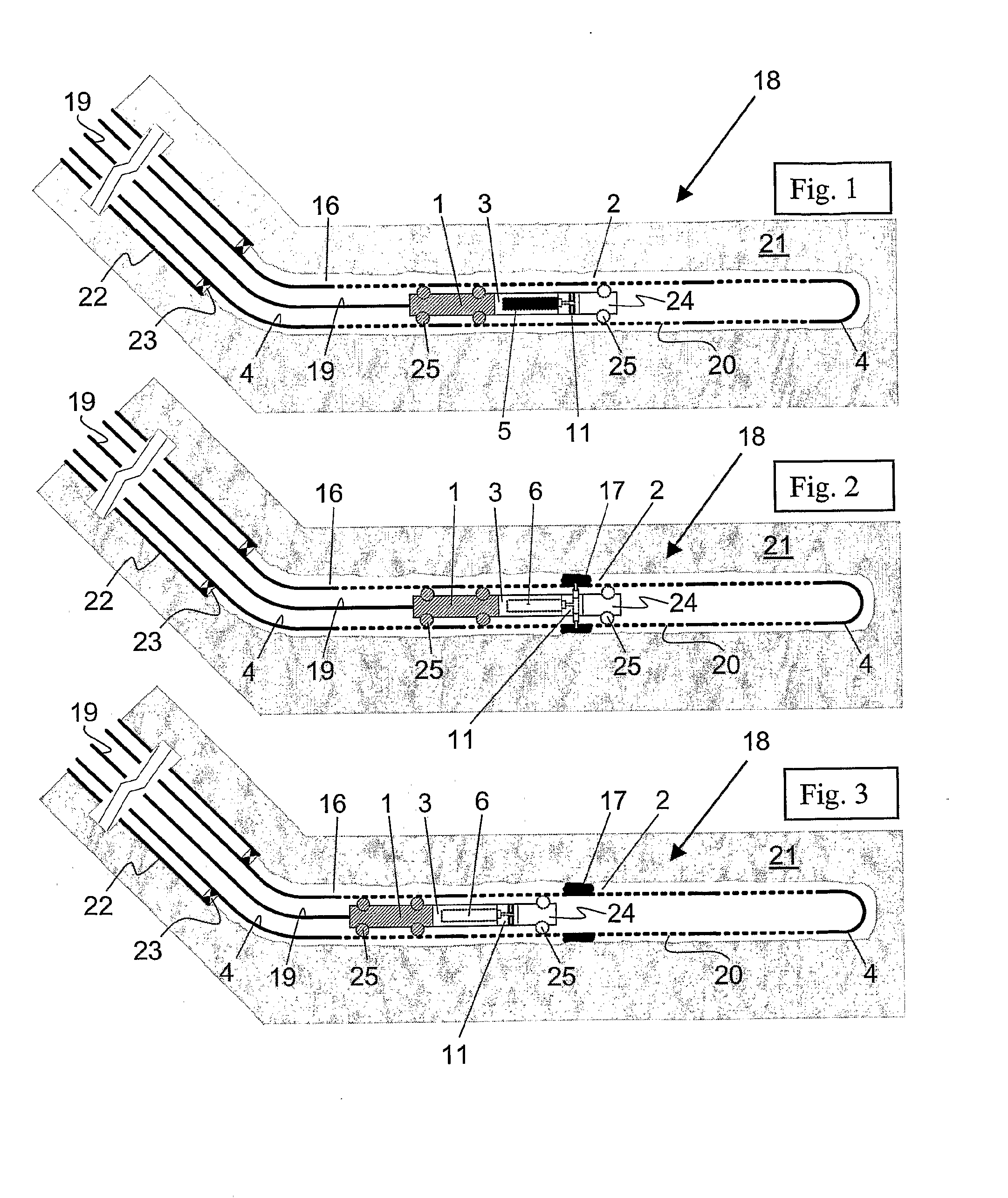Method and a Device for in Situ Formation of a Seal in an Annulus in a Well
- Summary
- Abstract
- Description
- Claims
- Application Information
AI Technical Summary
Benefits of technology
Problems solved by technology
Method used
Image
Examples
Embodiment Construction
OF EMBODIMENTS OF THE INVENTION
[0084]FIGS. 1-3 show a well tractor 1 located in a production tubing 4 through an open hole completed horizontal portion of a production well 18. Well tractors constitute prior art and are therefore not described in further detail herein. Along said horizontal portion, the production tubing 4 is provided with inflow openings 20 that, via an intermediate annulus 16, connect the production tubing 4 in a flow-communicating manner with permeable rocks in a surrounding reservoir 21. Above said horizontal portion, a casing 22 and a so-called guide shoe 23 at the bottom thereof surround the production tubing 4.
[0085]The uppermost side of the well tractor 1 is connected to surface via a connection line 19, which in this example is comprised of an electric cable. The electric cable 19 is arranged in a manner allowing it to transmit energy and control signals to both the well tractor 1 and a device according to the invention being connected to the lowermost side...
PUM
 Login to View More
Login to View More Abstract
Description
Claims
Application Information
 Login to View More
Login to View More - R&D
- Intellectual Property
- Life Sciences
- Materials
- Tech Scout
- Unparalleled Data Quality
- Higher Quality Content
- 60% Fewer Hallucinations
Browse by: Latest US Patents, China's latest patents, Technical Efficacy Thesaurus, Application Domain, Technology Topic, Popular Technical Reports.
© 2025 PatSnap. All rights reserved.Legal|Privacy policy|Modern Slavery Act Transparency Statement|Sitemap|About US| Contact US: help@patsnap.com



